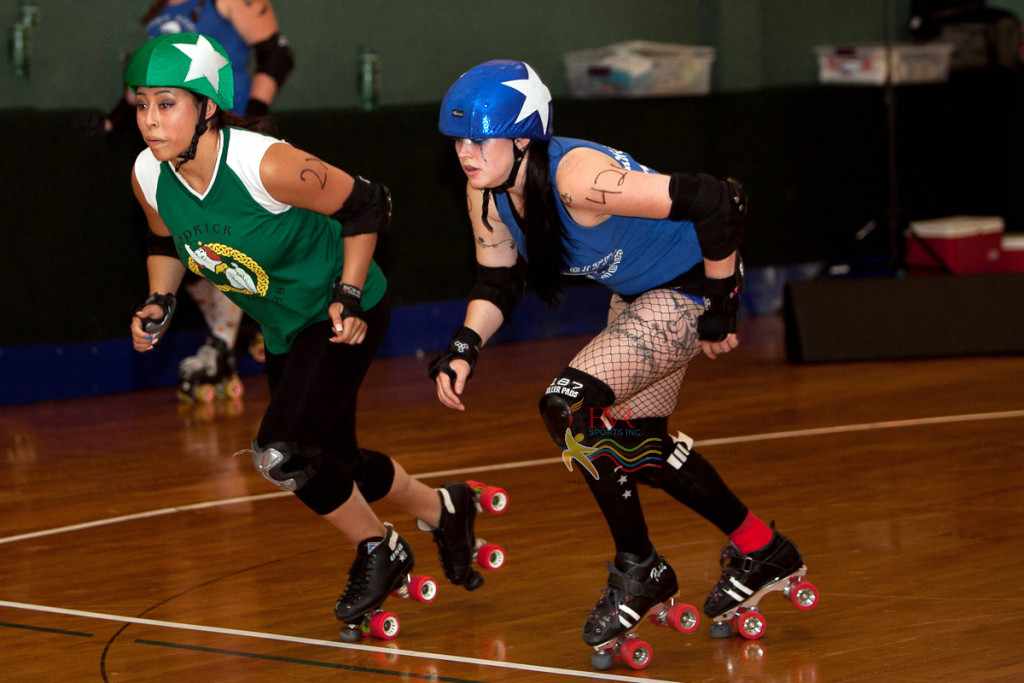
Roller skating is the traveling on surfaces with roller skates. It is a form of recreational activity as well as a sport, and can also be a form of transportation. Skates generally come in three basic varieties: quad roller skates, inline skates or blades and tri-skates, though some have experimented with a single-wheeled “quintessence skate” or other variations on the basic skate design. In America, this hobby was most popular, first between 1935 and the early 1960s and then in the 1970s, when polyurethane wheels were created and “Disco” oriented roller rinks were the rage and then again in the 1990s when in-line outdoor roller skating, thanks to the improvement made to inline roller skates in 1981 by Scott Olson, took hold.
Roller derby
Roller derby is played by two teams of up to fourteen players, who both field up to five members for each two-minute jam, simultaneously skating counterclockwise on a circuit track. Each team designates a scoring player (the “jammer”); the other four members are “blockers.” One blocker can be designated as a “pivot”—a special blocker who is allowed to become a jammer in the course of play. The jammer wears a helmet cover bearing two stars; the pivot wears a striped cover; the remaining members’ helmets are uncovered.
The bout is played in two periods of 30 minutes. Point scoring occurs during “jams”: plays that last up to two minutes. During a jam, points are scored when a jammer on a scoring pass (every pass a jammer makes through the pack after the initial pass) laps members of the opposing team. Each team’s blockers use body contact, changing positions, and other tactics to assist its jammer to score while hindering the opposing team’s jammer. Certain types of blocks and other play are violations; referees call penalties and require violators to serve time in a penalty box.
Jams
Play begins by blockers lining up on the track anywhere between the rear “jammer line” and the front “pivot line”. The jammers start behind the “jammer line,” a second starting line 30 feet behind the pivot line. Jams begin on a single short whistle blast where both jammers and blockers may begin engaging immediately.
The pack is the largest single group of blockers containing members of both teams skating in proximity, arranged such that each are within 10 feet of the next. While blockers are required to maintain the pack, they are permitted to skate freely within the area of the track beginning 20 feet behind the pack and ending 20 feet ahead of it, an area known as the “engagement zone.” The first jammer to exit the front of the pack, having legally passed all blockers at least once, earns the status of “lead jammer.” Once earned, lead jammer status cannot be transferred to other skaters, but certain actions (notably, being sent to the penalty box) can cause it to be lost. After the initial pass through the pack, each jammer scores a point every time they lap any member of the opposing team.
The lead jammer can stop the jam at any time by repeatedly placing both hands on their hips. If the jam is not stopped early, it ends after 2 minutes. If time remains in the period, teams then have 30 seconds to get on the track and line up for the next jam. Team members typically rotate between jams from the 14 players on the team’s roster. Designations may change between jams: a pivot in one jam might be the jammer in a later jam.

